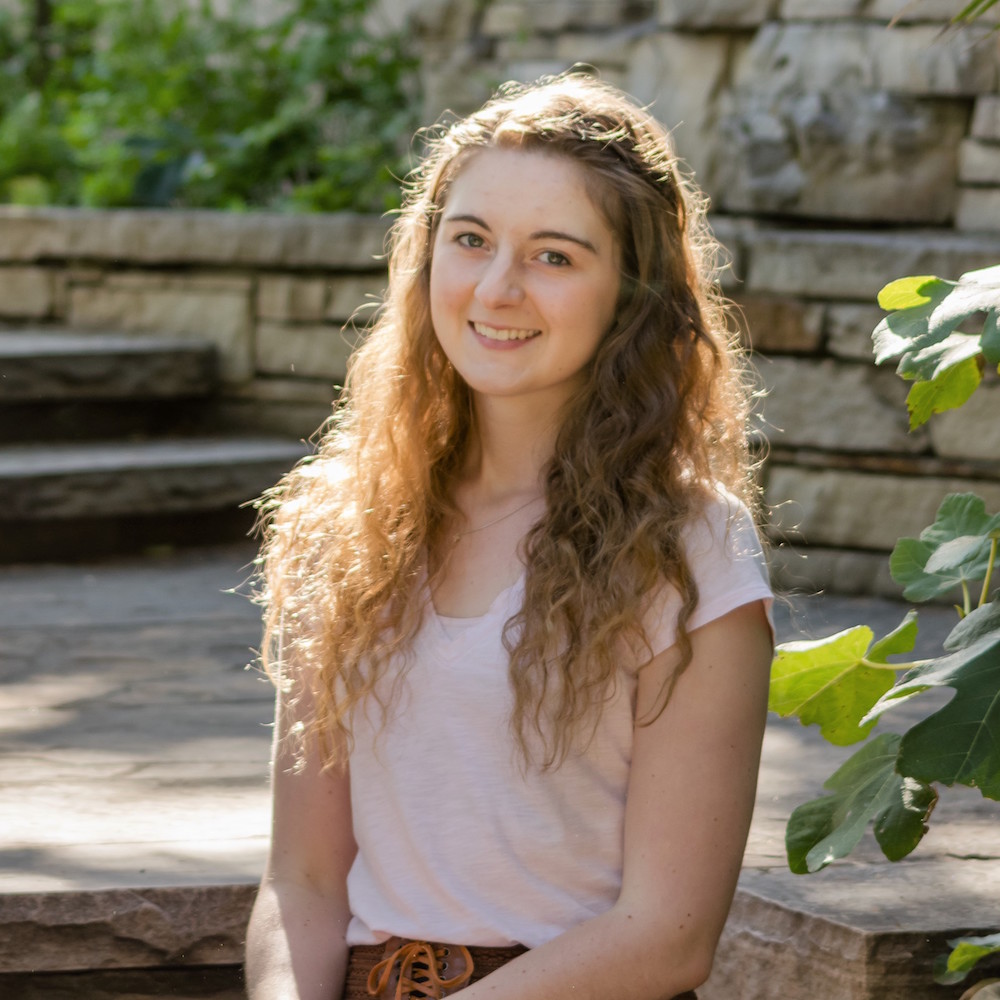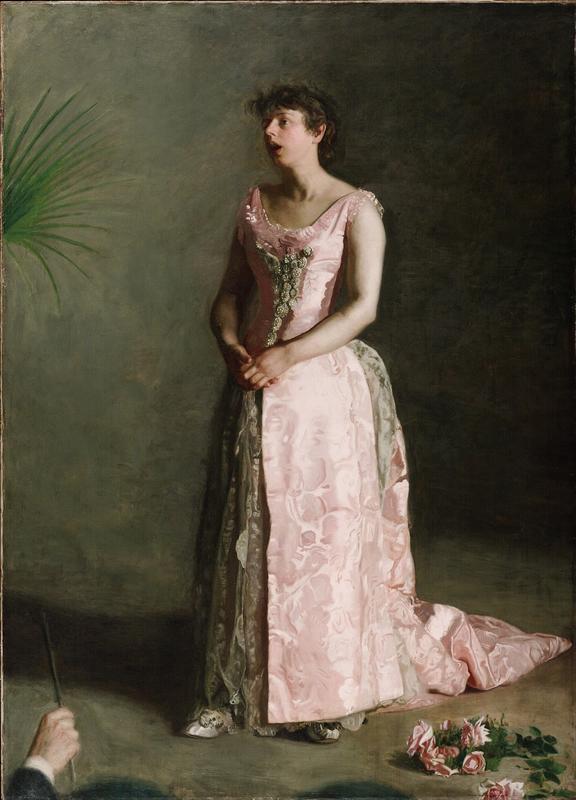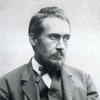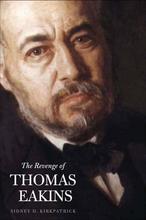More about The Concert Singer
- All
- Info
- Shop

Contributor
Thomas Eakins’s beautiful painting The Concert Singer seems tame at first glance:
A young woman singing in a nice pink dress. Feminine. Cultured. Boring? Not in the slightest! This painting encapsulates the controversy of Eakins’s life at a much deeper level, when you begin to dig into the backstory of this life-size artwork.
In 1886, four years before beginning this portrait, Eakins was forced to retire from his position as the director of the Pennsylvania Academy of Fine Arts. He had removed the loincloth covering of a male model in the presence of female students during an anatomy drawing class. Eakins always had an interest in the human form (both male and female) throughout his career (*wink wink*), though this event was perhaps the most scandalous. After taking a few years off after this incident (due to a period of depression), he turned the later part of his career toward portraits such as The Concert Singer.
This piece was painted over a period of 2 intense years, 1890-1892. At the beginning of the process, Eakins had singer Weda Cook model 3 or 4 times weekly, each time singing the same section of Felix Mendelssohn’s “Elijah” over and over (the opening of “O Rest in the Lord”), so as to study the shape of the singer’s mouth and the set of her neck during the performance. It was methodical, and he was committed to getting the details right. However, he made the mistake of going so far as to ask Cook to pose nude - so as to precisely render her pose beneath the performance outfit, he said. The singer repeatedly declined. While today this would be more than a reason to end the partnership (and press charges), the work continued, though not without a falling-out. After some time apart, the artist and model/ singer reconnected, and Eakins went on to paint Cook (and her husband) repeatedly over the following years.
Despite the drama over the work, Cook loved this painting. She even asked to have it, though - wanting to exhibit it more widely - Eakins elected to keep it. It was a deeply personal painting to both the singer and painter, having spent so much time working on it together: each deeply invested in the perfection of their part of the painting. On Eakins side: the study of the subject. For Cook: her bodily representation, and even elements of those close to her. If you look closely, you will notice the hand of a conductor at the bottom left of the canvas: this is the hand of Cook’s teacher and conductor, Charles Schmitz. Eakins even went so far as to carve the music itself into the frame of this piece, which you can see on view at the Philadelphia Museum of Art, in Eakins’s native city.
Sources
- Forgione, Nancy. “A Controversial Life of a Popular Painter.” The Baltimore Sun, 10 Dec 2006, accessed 13 Oct 2019, https://www.baltimoresun.com/news/bs-xpm-2006-12-10-0612080237-story.ht….
- “Mendelssohn: Elijah.” Youtube: Muzikazaile. Accessed 13 Oct 19, https://www.youtube.com/watch?v=LlY8WQ5vLeY.
- Parker, Charley. “Eye Candy for Today: Eakins’s Concert Singer.” Lines and Colors Blog, 11 May 2015, accessed 13 Oct 2019, http://linesandcolors.com/2015/05/11/eye-candy-for-today-eakins-concert….
- “The Concert Singer.” Philadelphia Museum of Art. Accessed 13 Oct 2019, https://www.philamuseum.org/collections/permanent/42499.html.
- “The Concert Singer.” Wikipedia, accessed 13 Oct 2019, https://en.wikipedia.org/wiki/The_Concert_Singer.
- “Thomas Eakins and the Sound of Painting.” Accessed 13 Oct 2019, https://gss.grad.uiowa.edu/system/files/Thomas%20Eakins%20and%20the%20S…
Featured Content
Here is what Wikipedia says about The Concert Singer
The Concert Singer is a painting by Thomas Eakins (1844–1916), depicting the singer Weda Cook (1867–1937). The work, commenced in 1890 and completed in 1892, was Eakins's first full-length portrait of a woman. It is now in the Philadelphia Museum of Art.
The Concert Singer was one of a series of portraits Eakins painted of Philadelphia natives who were prominent in science and culture, with the intent of producing major showpieces for exhibition. The painting exemplifies Eakins's desire to truthfully record visual appearances with "historical value."
Eakins drew, painted, or sculpted at least twenty-two works that dealt with the visual aspects of music; at one point, this included "eleven straight portraits of musicians and musicologists", of which The Concert Singer has been called "the finest".
Check out the full Wikipedia article about The Concert Singer













